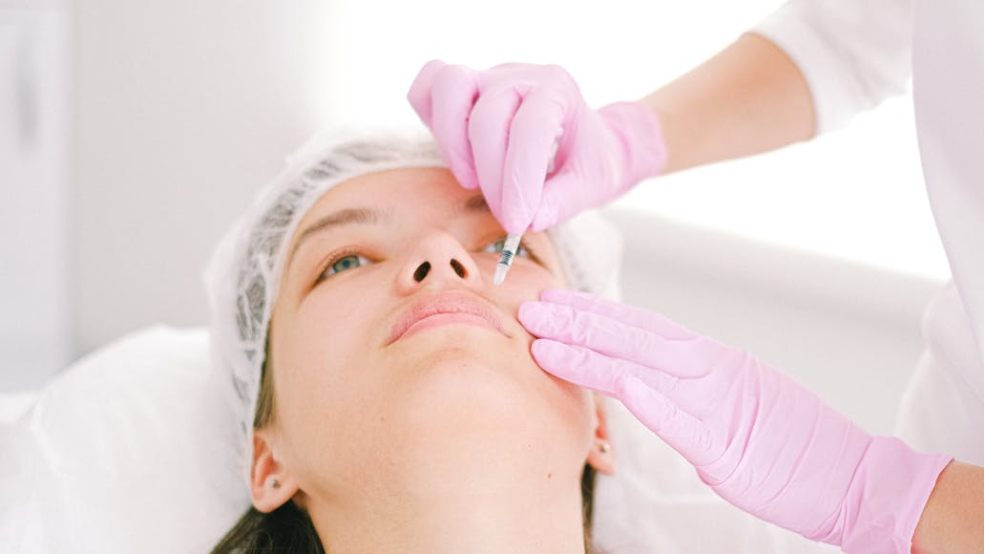
Reasons Behind The Growing Popularity of Non-Surgical Facelifts in the UK and Ireland
Over the past decade, there has been a remarkable shift in the way people approach anti-ageing treatments. In the UK and Ireland, non-surgical facelifts have surged in popularity as more individuals seek out subtle, effective ways to rejuvenate their appearance without going under the knife.
Gone are the days when a traditional facelift was the only option for combatting sagging skin or restoring youthful contours. Today’s non-invasive alternatives offer impressive results with minimal downtime, fewer risks, and more affordable price tags. But what’s really behind this growing demand—and which treatments are leading the charge?
In this guide, we explore the reasons for the boom, the most popular treatments available, and what potential clients need to consider before diving in.
What Is a Non-Surgical Facelift?
A non-surgical facelift is a combination of minimally invasive and non-invasive procedures designed to lift, tighten, and revitalise the face—without surgery or general anaesthesia. These treatments target early signs of ageing, such as fine lines, sagging skin, and loss of volume, providing natural-looking results with far less recovery time.
Some of the most common non-surgical facelift options include:
- Dermal fillers
- Anti-wrinkle injections (e.g. Botox)
- Thread lifts
- Ultrasound and radiofrequency skin tightening (e.g. Ultherapy, Morpheus8)
- Laser skin resurfacing
- Microneedling with PRP (platelet-rich plasma)
- GHK-Cu and other peptides
Unlike surgical facelifts, which involve cutting, lifting, and repositioning skin and muscles, these methods work by stimulating collagen production, restoring volume, or gently repositioning tissues using minimally invasive tools.
Why Are They Becoming So Popular?
1. Desire for Natural-Looking Results
Modern clients are moving away from the “overdone” look once associated with cosmetic treatments. Instead, they want to look like fresher versions of themselves. Non-surgical facelifts allow for gradual, subtle improvements rather than dramatic transformations.
These treatments often focus on enhancing natural features, boosting skin quality, and reversing mild to moderate signs of ageing—all without changing a person’s facial identity.
2. Minimal Downtime and Recovery
One of the biggest appeals of non-surgical procedures is the minimal downtime. Many people in the UK and Ireland lead fast-paced lives, balancing careers, families, and social obligations. A non-surgical facelift can often be done in under an hour, with clients returning to work or daily life almost immediately.
In contrast, surgical facelifts typically require weeks of recovery, bruising, swelling, and potential complications.
3. Lower Cost Compared to Surgery
Although non-surgical facelifts are not cheap, they are significantly more affordable than traditional surgery. A full facelift surgery in the UK can cost upwards of £7,000–£10,000, while a combination of non-surgical treatments may cost between £1,000 and £3,500, depending on the complexity and type of treatments used.
For many people, this makes cosmetic enhancement much more accessible without long-term financial commitment or recovery burdens.
4. Advances in Technology and Technique
Thanks to ongoing innovation in the aesthetics industry, the tools and techniques available have become far more sophisticated. Treatments like high-intensity focused ultrasound (HIFU), radiofrequency microneedling, and PDO thread lifts offer results that were previously impossible without surgery.
These new technologies are not only more effective but also safer and more tailored to individual skin types and goals.
5. Influence of Social Media and Celebrity Culture
Celebrities and influencers are openly discussing their aesthetic treatments, which helps to normalise cosmetic procedures and reduce the stigma previously attached to “having work done.” Platforms like Instagram and TikTok are full of before-and-after transformations showing the subtle but impressive effects of non-surgical facelifts.
In the UK and Ireland, this has especially resonated with younger demographics seeking “prejuvenation”—a preventative approach to ageing—rather than waiting until the signs of ageing are advanced.
Popular Treatments Driving the Trend
1. Dermal Fillers
Used to restore lost volume, smooth lines, and enhance facial contours, dermal fillers made from hyaluronic acid are one of the pillars of non-surgical facelifts. Popular treatment areas include:
• Cheeks
• Jawline
• Nasolabial folds
• Temples
• Under-eyes (tear troughs)
When performed by a skilled practitioner, fillers provide instant results with minimal swelling or bruising.
2. Anti-Wrinkle Injections (e.g. Botox)
Botulinum toxin injections are used to relax facial muscles and reduce the appearance of dynamic wrinkles, particularly on the forehead, around the eyes, and between the brows.
Botox also plays a preventative role for those in their late 20s and 30s, helping delay the formation of deeper lines.
3. Thread Lifts
Thread lifts involve inserting dissolvable threads beneath the skin to mechanically lift sagging areas while also stimulating collagen production. Results are immediate and continue to improve over several months.
Common treatment areas include:
• Jowls
• Neck
• Mid-face
• Brows
This treatment is often referred to as the “lunchtime lift” due to its quick recovery time.
4. Skin Tightening Technologies
Non-invasive devices like Ultherapy, Thermage, and Morpheus8 use ultrasound or radiofrequency energy to stimulate collagen deep within the skin layers. Over several months, the skin becomes firmer, tighter, and more lifted.
These non-surgical treatments are ideal for those with mild skin laxity and are particularly popular in the 35–55 age group.
The UK and Ireland: A Surge in Aesthetic Clinics
Both the UK and Ireland have seen a rapid rise in the number of aesthetic clinics offering non-surgical facelifts. Cities like London, Manchester, Dublin, and Belfast are now home to highly qualified aesthetic doctors and nurse practitioners offering bespoke facial rejuvenation plans.
This accessibility has made treatments more mainstream—not just for celebrities or the ultra-wealthy, but for everyday people who want to invest in their confidence and self-image.
What Should You Consider Before Booking?
Although non-surgical facelifts are less invasive, they still carry some risk, particularly in the hands of underqualified practitioners. Here's what to keep in mind:
Qualifications and Experience
Always choose a medically trained professional—ideally a GMC-registered doctor or NMC-registered nurse with specific training in aesthetics. Look for clinics that are insured and follow strict hygiene protocols.
Realistic Expectations
Non-surgical facelifts offer subtle, natural results. They can’t replicate the effects of a full surgical facelift, especially in older patients with significant sagging.
Maintenance Is Required
Most treatments require ongoing maintenance. Fillers and Botox typically last 6–12 months, while skin tightening effects may last 1–2 years. Be prepared for a long-term commitment if you wish to maintain results.
Final Thoughts
The rise of non-surgical facelifts in the UK and Ireland reflects a broader change in attitudes towards beauty, ageing, and wellness. Today’s clients are more informed, more empowered, and more inclined to seek treatments that deliver results without disrupting their lives.
Whether you’re in your 30s looking for preventative solutions or in your 50s aiming to refresh your look, there are now more options than ever to help you feel confident in your skin—without a scalpel in sight.

















